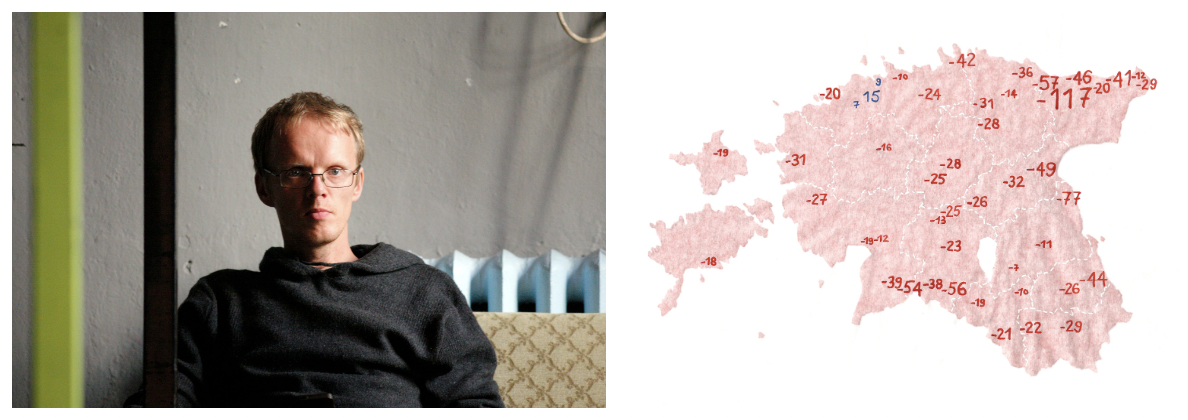
Photo by Martin Siplane, illustration from Ehituskunst by Ulla Alla
When you started compiling this issue, did you have a specific shrinking town – in Estonia or elsewhere – in mind? Where did this topic come from?
There was no particular shrinking town in mind, no. The topic came from the fact that several of the students I supervised touched upon this topic for their master’s thesis. Supervising them, I got the feeling there’s more to shrinking than perhaps a student would be able to research independently, having just a year. Having worked on Ehituskunst over the years, I’ve felt more and more that the main readers of the magazine are architecture students. Of course, if anybody else picks it up, it’ll be a pleasure, too. Each issue of the journal could be seen like a starter pack for a student starting their own research into a topic. If it turned out to be a starter package for someone else, and in a completely different direction, it would already be a great success.
Which Estonian towns have coped well with the decline? Which ones are bad at it?
In Estonia, basically all towns except Tallinn and Tartu are shrinking. Or at least they don’t grow. One of the questions that interested me when I was compiling this issue was what coping really means in this case. One of the goals facing Estonia is to radically reduce our footprint. If a town is “coping well” in the traditional sense of turning shrinkage into growth, it means that its footprint will increase. It seems that we should do well in a different way in the future. Here, those towns that have not done well so far may have a head start.
In how many years from now, should we be looking at the towns that are facing decline, in order to assess how things went?
One might ask first – when we will start to take this issue seriously. If the matter is not being dealt with at all at the moment (even though there are more and more positive exceptions), then there is no point in reviewing it in a while.
What did you read while compiling this issue of Ehituskunst that inspired you? Are there any works of fiction that come to mind about the shrinking city?
I would rather say that I did not compile this magazine at all, at least not in the strong sense of the word. Rather, it was like stacking logs: you take one log and see where it fits; then you take the second log, the third, and so on, until the stack is up. The interviews we did in the beginning sprouted questions for interviews that came after. The already existing parts began to demand new neighbours. Gradually, the beginnings of a possible structure began to emerge. It is true that at one point the building of a stack became the construction of a mosaic, although a firewood stack is a kind of mosaic, too. When there were enough pieces, they could be moved around in search for a possible whole. At one point, the stack was more or less standing upright and looked unexpectedly good.
You can find the latest issue of Ehituskunst in bookstores after Midsummer, but on June 22 at 2 pm, everyone is welcome to join us in raising a glass to the new issue and listen to mini-talks staircase in the lobby of EKA. Practical tip: the magazine has an especially student-friendly price at the presentation. Grab a copy for your holiday reading stack!
